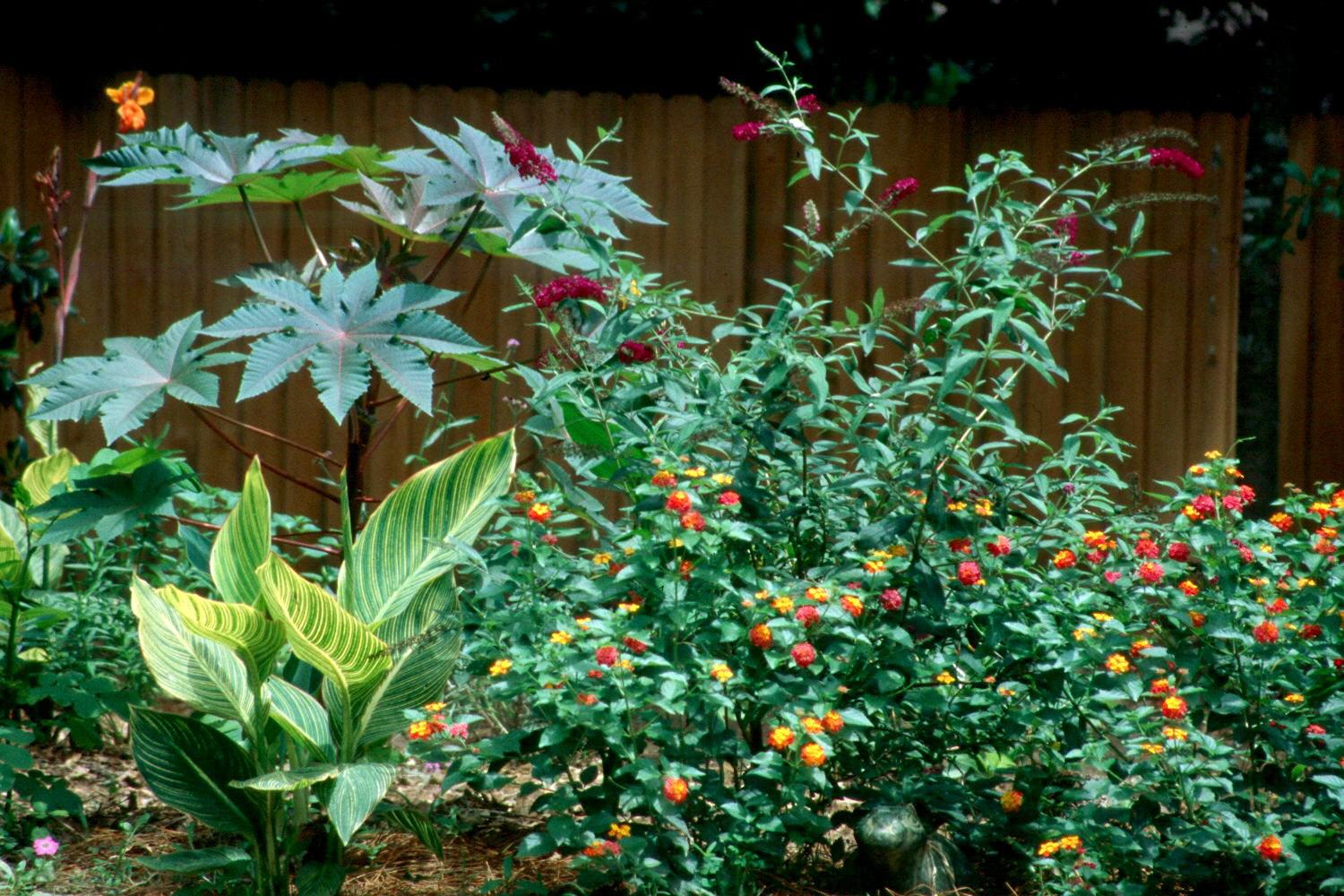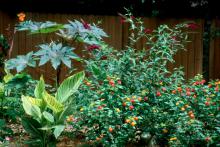Information Possibly Outdated
The information presented on this page was originally released on July 15, 2002. It may not be outdated, but please search our site for more current information. If you plan to quote or reference this information in a publication, please check with the Extension specialist or author before proceeding.
Old-fashioned favorite castor bean sees revival
By Norman Winter
MSU Horticulturist
Central Mississippi Research & Extension Center
The castor bean, one of the South's best old-fashioned plants, really starts to attract attention this time of the year. The castor bean is undergoing a revival of sorts -- not only showing up in the rural cottage gardens but also in places like Northpark Mall in Jackson.
The castor bean has been grown in the United States for a long time but comes from northeast Africa. It is in the Euphorbia family, making it related to poinsettias and copper plants.
The huge palmate leaves are colorful in shades of burgundy or maroon with dark veins. The stems supporting the leaves and blooms are red and equally attractive. The blooms are white and almost inconspicuous, but the burr-like seedpods that fall are very striking.
Please be warned that the plant is poisonous if ingested and the seeds inside the colorful fruit are deadly toxic. Castor oil is a well-known extract from the seeds. Those of you who were given the vile tasting purgative may have to wonder if there was another motive in taking the medicine. Extracts are also used in making paints, varnishes and lacquers.
Despite that caution, the plant itself is unbeatable in the landscape and easy to grow. Select a site in full sun with fertile, well-drained soil.
The castor bean is fairly drought tolerant and will grow in poorer soils, but with fertile soil and supplemental water, it reaches monolithic proportions. The plant is so vigorous it can reach close to 10 feet in one year from seed. It has been known to reach 40 feet in tropical areas.
Plant yours at the same depth they are growing in the container. Space the plants 4 to 6 feet apart and apply a good layer of mulch after planting.
The plant can return occasionally in zone 8b and 9 by removing frost-damaged foliage and applying extra mulch in the fall. Since it is so easy to grow from seeds, I recommend you just treat it as an annual. If you are worried about the toxic seeds, then simply remove the pods before they mature and throw them away.
The castor bean normally grows with such vigor that much fertilization is not needed. A light application of a slow release 12-6-6 fertilizer about a month after transplanting will be sufficient.
The castor bean looks at home in a cottage garden, perennial garden or the tropical-looking garden. The coarse textured foliage from the plant really has the ability to give the garden an exotic look. Combine it with bananas, cannas, elephant ears and lantanas.
It is rare to find container-grown plants at local garden centers. Those that are found have been sold generically. The castor bean has been much easier for me to find in the seed racks. Named selections are Black Beauty with dark brown leaves that turn green, Coccineus with bronze leaves, Impala with maroon foliage, Red Spire with bright red stems and bronze leaves, Sanguineus with deep red leaves and Scarlet Queen with burgundy foliage.








